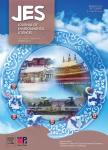Assessment of health benefit of PM_(2.5) reduction during COVID-19 lockdown in China and separating contributions from anthropogenic emissions and meteorology
Assessment of health benefit of PM2.5 reduction during COVID-19 lockdown in China and separating contributions from anthropogenic emissions and meteorology作者机构:Research Center for Intelligent Information TechnologyNantong UniversityNantong 226019China Nantong Research Institute for Advanced Communication TechnologiesNantong 226019China State Key Laboratory of Atmospheric Boundary Layer Physics and Atmospheric ChemistryInstitute of Atmospheric PhysicsChinese Academy of SciencesBeijing 100029China Department of Medical InformaticsMedical SchoolNantong UniversityNantong 226019China
出 版 物:《Journal of Environmental Sciences》 (环境科学学报(英文版))
年 卷 期:2022年第34卷第5期
页 面:422-431页
核心收录:
学科分类:0830[工学-环境科学与工程(可授工学、理学、农学学位)] 07[理学] 070602[理学-大气物理学与大气环境] 0706[理学-大气科学]
基 金:This work was supported by the National Natural Science Foundation of China(No.81873915) the Ministry of Science and Technology Key Research and Development Program of China(No.2018YFC0116902)
主 题:Covid-19 epidemic PM_(2.5) Health benefit Meteorological and anthropogenic contributions KZ filter
摘 要:The national lockdown policies have drastically disrupted socioeconomic activities during the COVID-19 pandemic in China,which provides a unique opportunity to investigate the air quality response to such anthropogenic *** it is meaningful to evaluate the potential health impacts of air quality changes during the lockdown,especially for PM_(2.5) with adverse health *** this study,by using PM_(2.5) observations from 1388 monitor-ing stations nationwide in China,we examine the PM_(2.5) variations between the COVID-19 lockdown(February and March in 2020)and the same period in 2015-2019,and find that the national average of PM_(2.5) decreases by 18 μg/m^(3),and mean PM_(2.5) for most sites(about 75%)decrease by 30%-60%.The anthropogenic and meteorological contributions to these PM_(2.5) variations are also determined by using a stepwise multiple linear regression(MLR)model combined with the Kolmogorov-Zurbenko *** results show that the change of anthropogenic emissions is a leading contributor to those widespread PM_(2.5) reductions,and meteorological conditions have the negative influence on PM_(2.5) reductions for some re-gions,such as Beijing-Tianjin-Hebei(BTH).Additionally,the avoided premature death due to PM_(2.5) reduction is estimated as a predicted number based on a log-linear concentration-response *** total avoided premature death is 9952 in China,with dominant con-tribution(94%)from anthropogenic emission *** BTH,Yangtze River Delta,Pearl River Delta and Hubei regions,the reductions of PM_(2.5) are 24.1,24.3,13.5 and 29.5 μg/m^(3),with the avoided premature deaths of 1066,1963,454 and 583,respectively.



